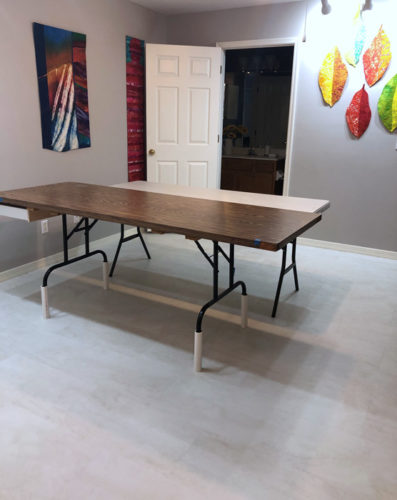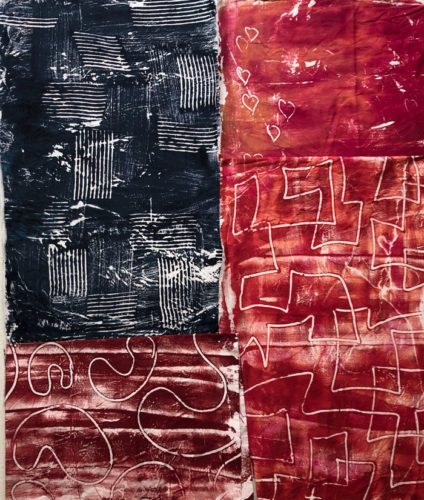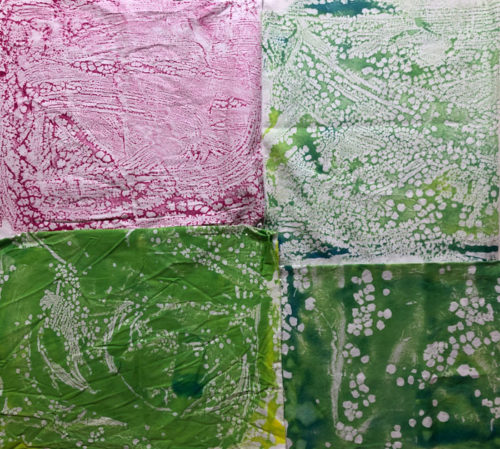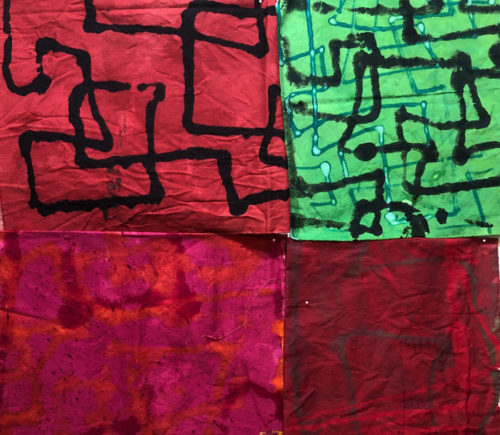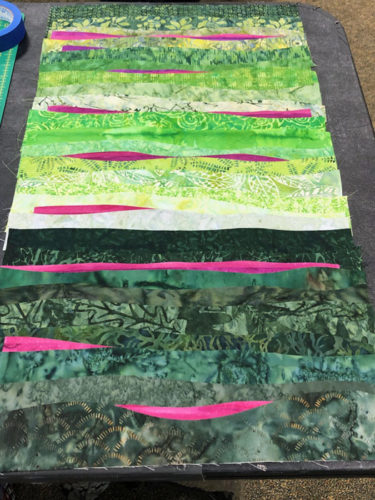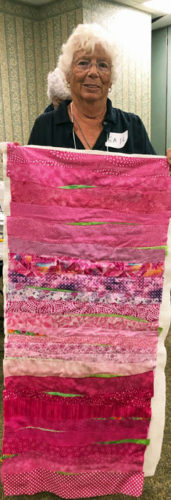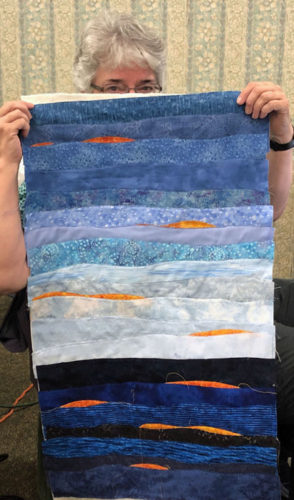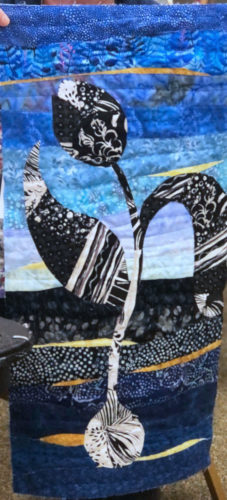Historically, I haven’t been a fan of red and yellow combinations, but for some reason, I now find myself drawn to them. I still think they’re a little jarring, but it seems that I now like that. As evidence, I recently dyed fabrics with these colors.
I created a variety, hoping I could use them together. As you an see, I repeated a bean shape in several colors. I was happy with how they worked together and was anxious to get started.

I realized some of the lightest fabrics wouldn’t fit well into the mix. But, I had some other fabrics I thought I could use. I pinned everything together on the design wall. And I loosely arranged them: a good starting point.
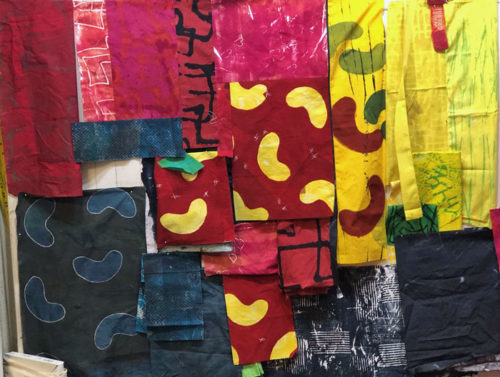
Knowing the contrast of red and yellow, as well as the contrast of different values, would attract attention, I placed them (above) in approximately “sweet spots.” These are considered ideal locations for focal points. They’re easy to identify: picture a tic-tac-toe game overlaying the overall shape. Where the lines cross are sweet spots.
I immediately thought the red fabric with yellow beans was a little too “regular.” (See above) That is, the beans were spaced too evenly. I thought the composition would be stronger if they were “messed up” a little bit. So, in the photo below, you can see that I sliced right through the red bean fabric, and scooted things out of alignment. Better, I thought.
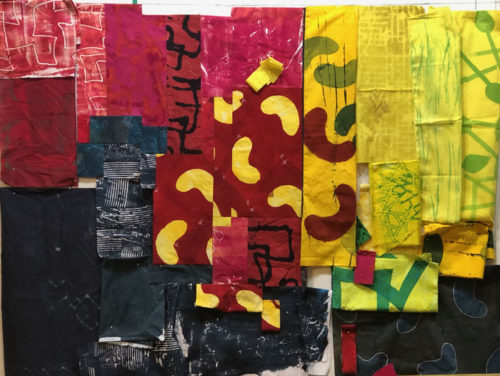
Next, came A LOT of auditioning as I folded, rearranged, cut (only once I was sure,) and pieced.
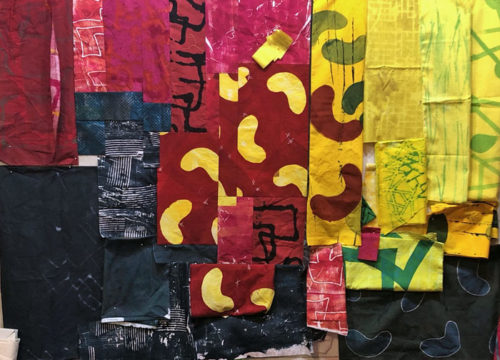
It was like a giant game of Tetris. Eventually, I had the left portion pieced and began to work on the yellow fabrics on the right.
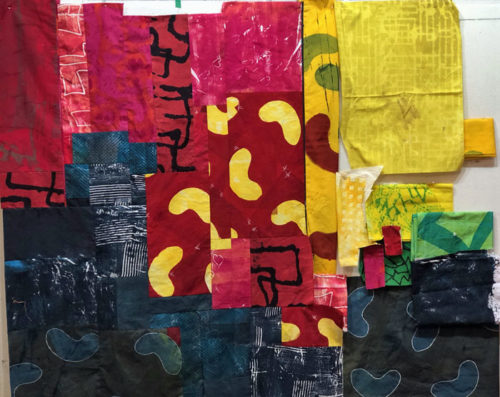
It all went more slowly that I would have liked, but I was definitely having fun!
More next time.
Ellen Lindner

